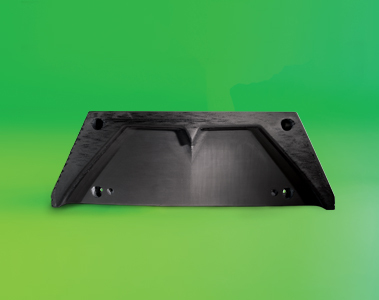Global nutritional science firm and materials producer DSM has introduced a new bio-based 3D printing polymer called EcoPaXX AM4001 GF (G).
DSM has designed its material to deliver on both performance and sustainability, and despite featuring 42 percent organic content, it reportedly demonstrates “excellent” thermal and mechanical properties. When used within the Fused Granulate Fabrication (FGF) 3D printing process, the plastic could enable users to create more lightweight automotive parts, that leave a reduced carbon footprint.
“EcoPaXX AM4001 GF (G) is a combination of DSM’s proprietary technology, and the power of nature’s building blocks derived from castor plants,” said Geoff Gardner, Innovations Director, Additive Manufacturing at DSM. “The material is ideal for pellet printing automotive structural parts and combining mechanical performance with a wide temperature range.”

DSM’s sustainability credentials
DSM may have a broad business portfolio, including a range of nutrition, health and materials-related interests, but it has also made a significant investment in 3D printing. In 2017, the firm launched a division that’s dedicated to the development of additive manufacturing materials, and it has since established various partnerships to expand on their applications.
At present, the company offers materials that are compatible with SLA, FDM and PBF systems, but it has recently targeted growth in its FGF material offering. As a result, it has increasingly started to work with the users and producers of pellet-based systems such as large-scale 3D printer distributor CEAD.
The companies have since focused on creating new feedstock, tooling and end-use applications for FGF technologies, that could enable the production of injection molding-level parts. Elsehwhere, DSM has partnered with 3D printed part supplier Nedcam, to develop specialized FGF components that are suitable for use within the marine industry.
The company has also demonstrated a commitment to producing more eco-friendly materials in the last few years, and participated in green projects such as the sustainable footbridge under construction in Rotterdam. The bridge is currently being built using the firm’s Arnite Fiber-Reinforced Thermoplastics (FRPs), which could prove to considerably lower the structure’s overall carbon footprint.
Considering DSM’s recent record of FGF and eco-friendly collaborations, it’s unsurprising that its newest 3D printing material is focused on these two potential markets. Interestingly though, the green credentials of DSM’s new polymer are not just based on its organic content. The material could also enable the creation of lightweight automotive parts that yield further emission reductions later on.

DSM’s EcoPaXX line of sustainable materials
EcoPaXX AM4001 is the first of DSM’s EcoPaXX range of engineering materials to be designed specifically for use within 3D printing applications. The polyamide PA410 comes in pellet form, which makes it ideal for producing rigid industrial parts quickly and efficiently using a variety of large-format FGF systems.
According to DSM, the material is characterized by a high level of thermal, chemical and mechanical resistance, as well as “good surface properties.” Additionally, because the polymer was created using the firm’s PA410 technology, it absorbs less moisture than classical PA6/66, making it easier to print and post-process.
The polymer itself has received ISO certification to verify that it consists of 42 percent bio-based materials, with almost half of its makeup being made of castor plants. In addition to being more eco-friendly than chemical-based materials, the EcoPaXX polymer’s composition could also make it ideal for producing more efficient lightweight automotive parts.
3D printing already enables manufacturers to easily adjust the internal geometries of complex parts, and reduce the costs and lead times associated with low volume production. Leveraging DSM’s new material, these users could now be able to create lightweight car parts, that meet lower emissions standards, and have a smaller carbon footprint overall.
The rise of eco-friendly polymers in 3D printing
Within 3D printing, sustainability is becoming a central topic of discussion, leading a number of researchers to develop their own bio-based manufacturing materials.
Researchers from Harvard University have developed a biocompatible 3D printing material that can be pre-programmed with reversible shape memory capabilities. The polymer, which was created using recycled wool, has potential applications in the medical prosthesis and textile sectors.
A team from the University of Freiburg, meanwhile, have created a wood-based eco-friendly additive manufacturing material. By combining lignin with cellulose balls, the researchers were able to develop a crystalline polymer that could be used with the construction industry.
Scientists from the Lithuania-based Vilnius University and the Kaunas University of Technology have gone one further, and developed a fully-recyclable resin. The material could be used within low-volume manufacturing applications to produce prototype parts at a lower cost.
To stay up to date with the latest 3D printing news, don’t forget to subscribe to the 3D Printing Industry newsletter or follow us on Twitter or liking our page on Facebook.
Are you looking for a job in the additive manufacturing industry? Visit 3D Printing Jobs for a selection of roles in the industry.
Featured image shows a stock image of an adult handing a child a miniature planet Earth. Image via DSM.



